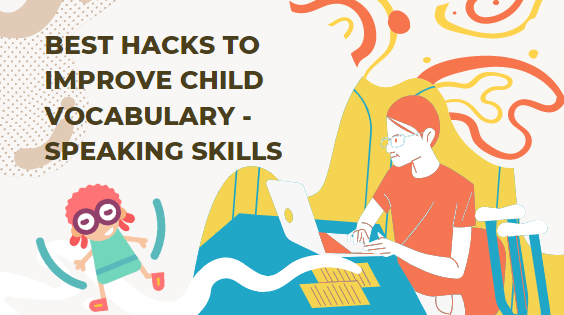How To Encourage Girls To Get Involved in STEM Through Coding
There’s no doubt that the field of science, technology, engineering, and math (STEM) is among the most important areas of study. This isn’t just due to the promising career paths this field affords. STEM education helps people navigate the tech tools needed in everyday life. Unfortunately, there is still a gender imbalance in STEM that needs to be addressed.
One potential tool to encourage more girls toward STEM is coding. We’re going to take a closer look at the gender gap and how to utilize coding effectively as a gateway to a rich and rewarding experience for girls interested in STEM education.
Why the Gender Gap in STEM Exists
There is still a significant gender gap in STEM. Only 28% of STEM workers are women.
However, the statistics on girls in STEM also show us that female learners have no less biological aptitude for math and science than their male counterparts. Indeed, in higher education, we can see female students tend to gravitate toward biological sciences.
However, there’s still work to be done in balancing other STEM subjects. While coding can be great to get girls more enthusiastic about the field, it’s still just a tool. To utilize it effectively, it’s important to understand what is influencing the gender gap.
Lack of Mentors
Mentors play a significant role in guiding students through the challenging academic elements of STEM and toward meaningful careers. Unfortunately, there is too often a fewer number of female mentors available to help girls thrive. This can be discouraging. Part of effectively utilizing coding to get girls involved in STEM has to include establishing inspiring and practical female mentors in the field.
Gender Stereotyping
A common issue with STEM is there’s an unhealthy and incorrect stereotype of science being a male field. This is often bolstered by the tendency for schools to teach men’s historical achievements in the field. Yet, there are incredible female STEM leaders, like Katherine Johnson and Tu Youyou, that students should also learn about. When using coding to encourage girls into STEM, there needs to be clarity that it is a field as much for female contributors as males.
Jessica Wade, a London-based physicist, has worked to draw attention to the thousands of women in STEM history who have been left out of the history books. She did this by writing Wikipedia biographies about women and minority scientists who did not get recognition and credit for the work they did.
Where To Find Coding Programs for Girls
There are growing resources specifically aimed at getting girls into coding. Among the most prevalent and active is Girls Who Code. They are dedicated to closing the gender gap in programming and run more than 8,500 coding clubs and camps around the world. Black Girls Code is also instrumental in helping young women of color overcome the hurdles contributing to the gender and race gap in STEM. They have 15 chapters around the country running code camps, hackathons, and enrichment programs.
There are certainly some schools offering coding clubs to highlight the value of STEM education. However, it is often the community-operated programs that are most dedicated to helping girls explore the career potential and personal enrichment coding has to offer.
Making Learning To Code Fun
Part of the hurdle with getting kids in general into coding is that it can be seen as a dry subject. Students tend to be put off by the idea that they need technical proficiency to engage with it. This illustrates one of the causes of gender disparity in STEM. Girls, in particular, already have lower self-confidence in their STEM abilities than boys. One way around this is to emphasize the fun of coding.
There are some fun platforms to introduce younger students to coding through making simple games and animations. The Massachusetts Institute of Technology (MIT) developed the Scratch and ScratchJr applications that teach the foundations of coding in a practical and fun way. This is also something girls can engage in, both by utilizing guided courses and working independently.
For teens, it’s worth getting them involved with fun events. Hackathons can be particularly exciting with many accessible to beginner coders. Part of the fun here is that these coding events involve various disciplines, including coding, bug testing, and graphic design.
Finding the Time To Code
As with any STEM subject, learning to code certainly takes some time and commitment. It’s important to find ways to help young girls include coding in their schedule without adding to the stress of juggling other activities.
One effective approach is to make their daily schedule more visible. Young students may find keeping mental track of their tasks overwhelming. Making a digital planner she can access on her smartphone or laptop via a PDF-annotation app can be a practical way to keep her day organized and manageable. This allows her to see all her responsibilities, prioritize them, and establish spaces for coding sessions, clubs, and hackathons.
Creating a Supportive Home Environment
One of the most important ways to encourage girls to code is by making sure their home life is designed to support them. As parents, you must make certain they have the resources they need to focus on their coding. This might be extra time allocation on family computers or making arrangements to take them to events.
One of the most simple yet impactful ways of making your home environment supportive is to be demonstratively encouraging about their efforts. Praise young female coders, listen to their ideas about the subject, and even get involved as a volunteer with their coding organizations. Regardless of your parenting style or guardianship situation, there are ways to support young girls looking to get into STEM.
If your family is one in which you’re coparenting in different households, there needs to be consistency. While it’s not always easy, divorced parents need to communicate regularly and openly to provide the most effective support for their kids. Cooperate in providing your daughter with the coding resources and education she needs to thrive. Ensure you’re both actively involved in her clubs and in helping her overcome hurdles.
Conclusion
It remains the case that there aren’t nearly enough women in STEM. Coding is one of the most important skills to possess in the modern world and can act as a route to other STEM subjects. There is a growing number of dynamic and community-driven coding organizations young girls can join to learn to code and find mentors. It’s also important to take steps that keep learning fun and practical. When more parents, teachers, and communities commit to encouraging girls in STEM, there is more opportunity to close the gender gap.
About the Author
 Katie Brenneman is a passionate writer specializing in education, mental health, family lifestyle and online safety. When she isn’t writing, you can find her with her nose buried in a book or hiking with her dog, Charlie. You can follow her on Twitter.
Katie Brenneman is a passionate writer specializing in education, mental health, family lifestyle and online safety. When she isn’t writing, you can find her with her nose buried in a book or hiking with her dog, Charlie. You can follow her on Twitter.



 Ava Roman (she/her) is the Managing Editor of
Ava Roman (she/her) is the Managing Editor of





